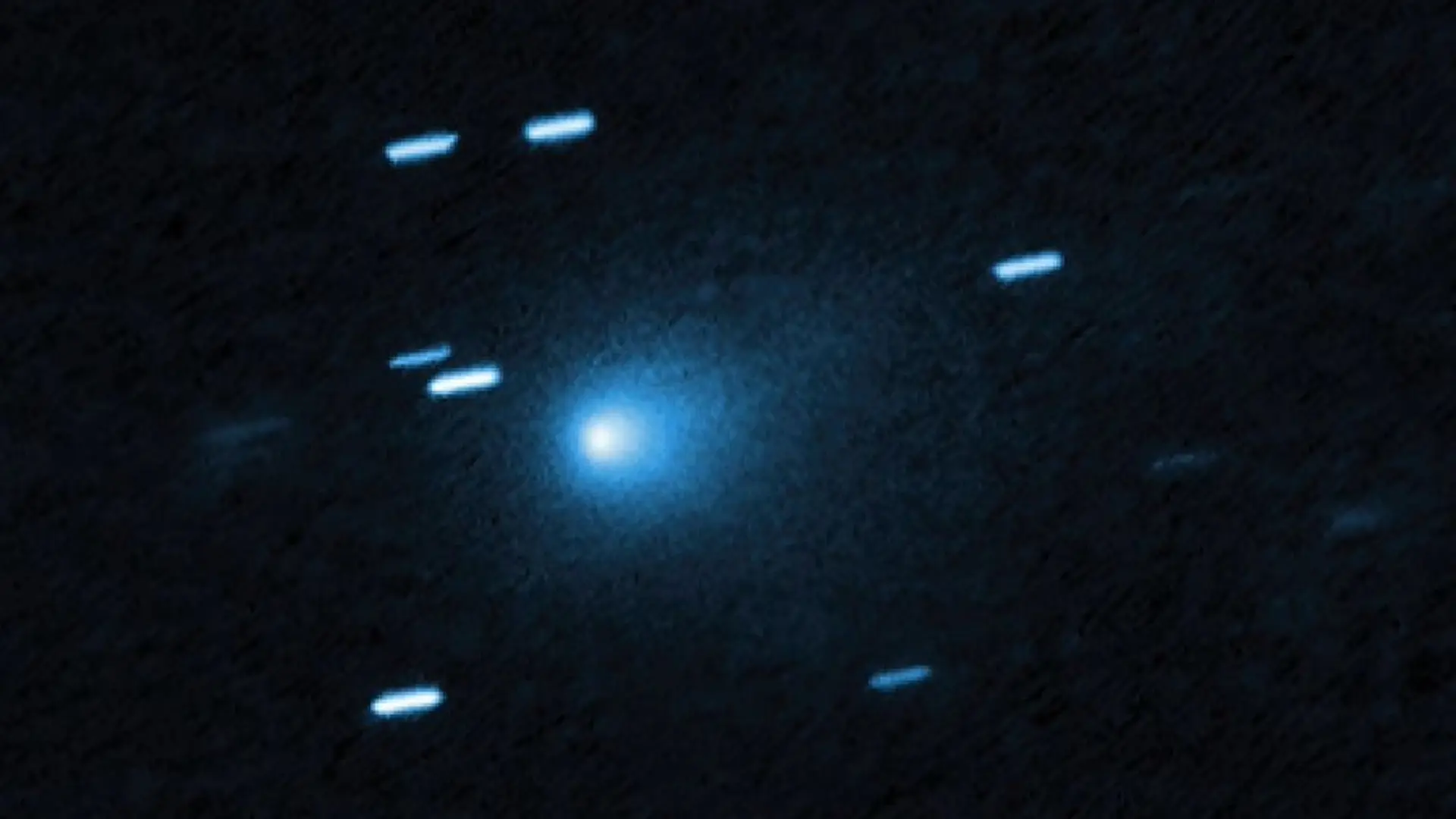Physicist Avi Loeb proposes multi-front approach to the search for extraterrestrial life as 3I/ATLAS gains attention
-
 Interstellar object 3I/ATLAS (Image via NASA)
Interstellar object 3I/ATLAS (Image via NASA)Israeli-American Harvard University physicist Avi Loeb recently discussed employing a multi-front approach to finding extraterrestrial life in space, as the interstellar object 3I/ATLAS continued to gain attention.
Speaking on the October 28, 2025, episode of The Joe Rogan Experience podcast, Avi Loeb shared how he would approach the search for life beyond Earth if given the necessary funds for the project.
He stated that it was necessary to “attack this question on several fronts.” According to him, there had to be another observatory similar to the Rubin Observatory in Chile, which monitored the southern sky,” to monitor the northern sky.
That way, there would be a “full alert system that would notify us of interstellar objects coming in.”
Loeb continued to stress the need for proper interceptors, specially-designed cameras, as well as a significant allocation of funds in the “planetary defense” fund to create a system that will protect Earth.
Apart from that, Loeb suggested the tracking of artificial lights and other traditional ways of searching for intelligent life.
Conversations surrounding extraterrestrial beings or an intelligent presence came to the forefront after the interstellar object 3I/ATLAS, discovered on July 1, 2025, began showing multiple anomalies.
The “anti-tail,” in particular, which Loeb speculated may be thrust exhaust from an intelligent life, trying to slow down the object, sparked alien theories among experts.
More details on Avi Loeb’s approach to finding extraterrestrial life
After stressing the importance of creating a copy of the Rubin Observatory in Chile to monitor the northern sky, Loeb discussed the use of interceptors.
“We need interceptors, a spacecraft that when we detect with those two observatories, we detect an object that comes from outside the solar system, then we can maneuver a spacecraft so that it will meet it along its path,” he explained.
The physicist then spoke about the Juno spacecraft near Jupiter and how capable it was of capturing the 31/ATLAS.
He recalled writing a paper discussing the change in the trajectory of Juno, which U.S. Representative Anna Pauline Luna read.
She then wrote a letter to the interim administrator of NASA, Sean Duffy, discussing the possibility of repurposing the Juno mission to intercept and study the interstellar object.
“If Juno had all the initial fuel that it originally had, it could have collided with 3I/ATLAS, but it used most of it,” Loeb said.
Thus, Loeb concluded that “a potential fleet of interceptors” had the capacity to “come really close and take a close-up photograph.”
According to Loeb, photographic proof of the 3I/ATLAS or any other object would automatically debunk all theories besides the truth.
Consequently, he believed they needed cameras that could not only take photographs but also collect samples and bring them back to Earth.
Avi Loeb speaks about the importance of allocating funds for planetary defense
Loeb argued that once alien technology was verified, confirming that it put Earth at risk, a significant fraction of the military budget should be allocated to create a system that would protect the planet.
“It’s called planetary defense. And we are dealing not with rocks, we are dealing with technological gadgets. So it should be much more sophisticated. So I’m saying let’s start with the level of billions of dollars just surged,” he said.
He continued:
“If we encounter a clearly technological alien object, then the budget will rise by a factor of 1,000 from the military budget portion going into it.”
Loeb also suggested the search for artificial lights, as it would allow experts to get more of an understanding.
Is 3I/ATLAS dangerous for life on Earth
While 31/ATLAS sparked concerns about being a visit by aliens and other risks, NASA confirmed that it posed no threat to the planet.
According to them:
“Comet 3I/ATLAS poses no threat to Earth and will remain far away. The closest it will approach our planet is about 1.8 astronomical units (about 170 million miles, or 270 million kilometers). 3I/ATLAS will reach its closest point to the Sun around Oct. 30, 2025.”
Stay tuned for more updates.
TOPICS: 3I/ATLAS, Avi Loeb, Joe Rogan, The Joe Rogan Experience
- Interstellar comet 3I/ATLAS: From 2025 discovery to global sensation – now heading beyond Earth
- Europa Clipper spends seven hours watching 3I/ATLAS as NASA studies elements in its surrounding plume
- Harvard Professor Avi Loeb weighs evidence and interpretation surrounding anomalies in 3I/ATLAS
- Erratic rotation detected as MAVEN Mars probe remains silent